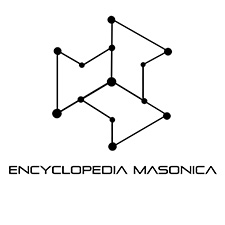
PETRE, LORD
Encyclopedia Masonica
Lord Petre was elected Grand Master of the (1717) Grand Lodge of England in 1772, and was reelected for three other terms. Because he was a remarkable man himself, entitled for his own sake to be remembered, and because his tenure in office fell at a critical period in the Grand Lodge's affairs, his administration is a landmark in Masonic history, for American Masons as much as for British, because at least one of his actions (re. Preston) was to have in the not distant future consequences for American Masonry of the first importance.
Brother Petre was one of three Grand Masters who were Roman Catholics while in office—Grand Master Lord Ripon resigned the office when he became a convert. But it appears never to have occurred to him that his religion interfered, or could interfere, with his Freemasonry. In 1772 he took the unprecedented step of giving Grand Lodge approval to a book not of an official kind, when in 1772 he officially sanctioned the publication of William Preston's Illustrations of Masonry —and the fact ought to have been kept in mind by R. F. Gould in those many pages of his History when he sought to discredit the book and to write down its author. Had not Lord Petre thus approved the publication, Thomas Smith Webb would not have made use of it, and American Lodges very probably would not now be using the Webb-Preston Work. Lord Petre similarly officially approved a second edition in l 775. He also gave approval to William Hutchinson's Smrxt of Masonry, a book which Mackey introduced to a wide public in America in later years. Both books were advertised for sale in the Proceedings of the Grand Lodge of England in 1776.
Lord Petre appointed the first Grand Chaplain— the ill-fated and self-fated Rev. William Dodd. Ele laid the foundation-stone of the new Freemasons' Hall in 1775. He created the new office—to be short lived—of Grand Architect. Under him, the Grand Lodge ordained that no keeper of a public house could be a member of a Lodge meeting on his premises. The Grand Lodge established correspondence with the Grand Lodge of Germany. At the very end of his last term the Grand Lodge took its first official step against the Ancient Grand Lodge, which had been established in London for twenty-five years, by forbidding Masons to visit its Lodges or receiving its members as visitors. The Resolution was harshly worded and presented by the then Grand Secretary, and was probably written by the latter; Ancient Masons are described as " Persons " (an insulting word at the time) who are " calling themselves Ancient Masons," of a "pretended" authority, "and at present said to be under the patronage of the Duke of Athol." (Why "said to be" when every Mason knew that it was?)
Lord Petre appeared in Grand Lodge for the last time in 1791. He died July 3, 1801; after his death it was discovered that he had expended each year in benevolence £5,000, a sum roughly equivalent at the present time to $75,000.
Notes. The Grand Secretary's Bull of Excommunication of 1777 against the Ancient was destined to have its thunders proved as hollow as other Bulls of other Vatican in only five years (1792) H. R. H. the Duke of Kent had himself made an Ancient Mason in Canada, and had an Ancient Provincial Grand Lodge set up there, although at the time he was a member of Modern Lodges in England; and did so as the first step in a plan he had made with his brother H. R. H. Duke of Sussex, to put an end to the unnecessary division in English Freemasonry, a project accomplished by them in 1813 at which time Kent was Ancient Grand Master and Susses was Modern Grand Master. It is interesting to observe—if the digression is allowable—that during his four years, Lord Petre was our Grand Master, as much so as he was of Lodges in England so that the history of his and of preceding administrations is our history; it is therefore extraordinarily difficult to explain why English historians, and almost with no exceptions omit so much as a reference to Provincial Grand Lodges and Lodges in Canada and America when writing their histories of the Grand Lodge and of the Craft!
